Indexers
Goldsky
Goldsky (opens in a new tab) is a high-performance data indexing provider for Fraxtal that makes it easy to extract, transform, and load on-chain data to power both application and analytics use cases.
Quick Start
Getting started
You can find the full documentation here (opens in a new tab)
To use Goldsky, you’ll need to create an account, install the CLI, and log in.
- Install the Goldsky CLI:
$ curl https://goldsky.com | sh-
Go to your Project Settings (opens in a new tab) page and create an API key.
-
Back in your Goldsky CLI, log into your Project by running the command
goldsky loginand paste your API key. -
Now that you are logged in, run
goldskyto get started. -
Fraxtal subgraphs can be deployed on Goldsky in 2 ways:
- Via CLI from a local subgraph configuration file. If you are familiar with developing subgraphs already, you'll be familiar with this approach; after defining a subgraph locally (with a
subgraph.yamlfile, aschema.graphqlfile, and the necessary mappings to translate raw event data into the entities defined in the schema), you can deploy subgraphs to Goldsky (once the Goldsky CLI is installed) usinggoldsky subgraph deploy <name>/<version> --path .. For more, read the step-by-step guide (opens in a new tab). - Via instant subgraphs, where you can pass through a contract address and the ABI for that contract. This is a quick-start option that automatically generates the underlying subgraph configuration files on your behalf, making it easy to extract blockchain event data and serve it as an API endpoint without complex setup. Use the
--from-abiflag in the command above instead of--path. For more, read the no-code subgraphs guide (opens in a new tab).
Fraxtal Mainnet is available at the chain slug frax-mainnet , with testnet support coming soon.
The Graph
The Graph (opens in a new tab) provides an easy way to query smart contract data through APIs known as subgraphs. The Graph’s infrastructure relies on a decentralized network of indexers, enabling your dapp to become truly decentralized.
Quick Start
Getting started
1. Initialize your subgraph project
- Create a subgraph on Subgraph Studio: Go to the Subgraph Studio (opens in a new tab) and connect your wallet. Once your wallet is connected, you can begin by clicking “Create a Subgraph”. When choosing a name, it is recommended to use Title Case: “Subgraph Name Chain Name.”
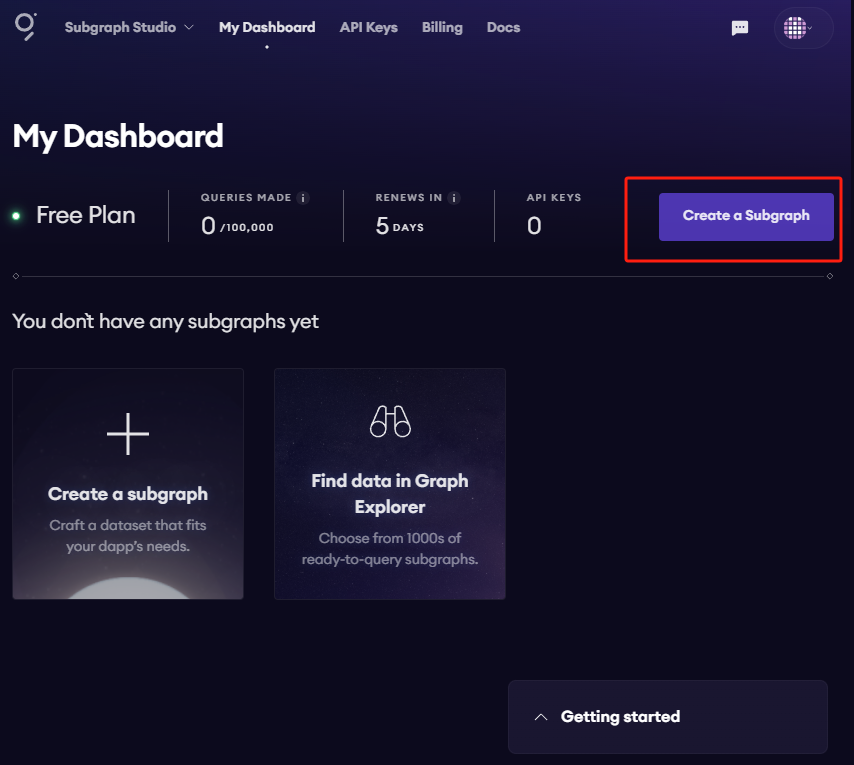
You will then land on your subgraph’s page. All the CLI commands you need will be visible on the right side of the page:
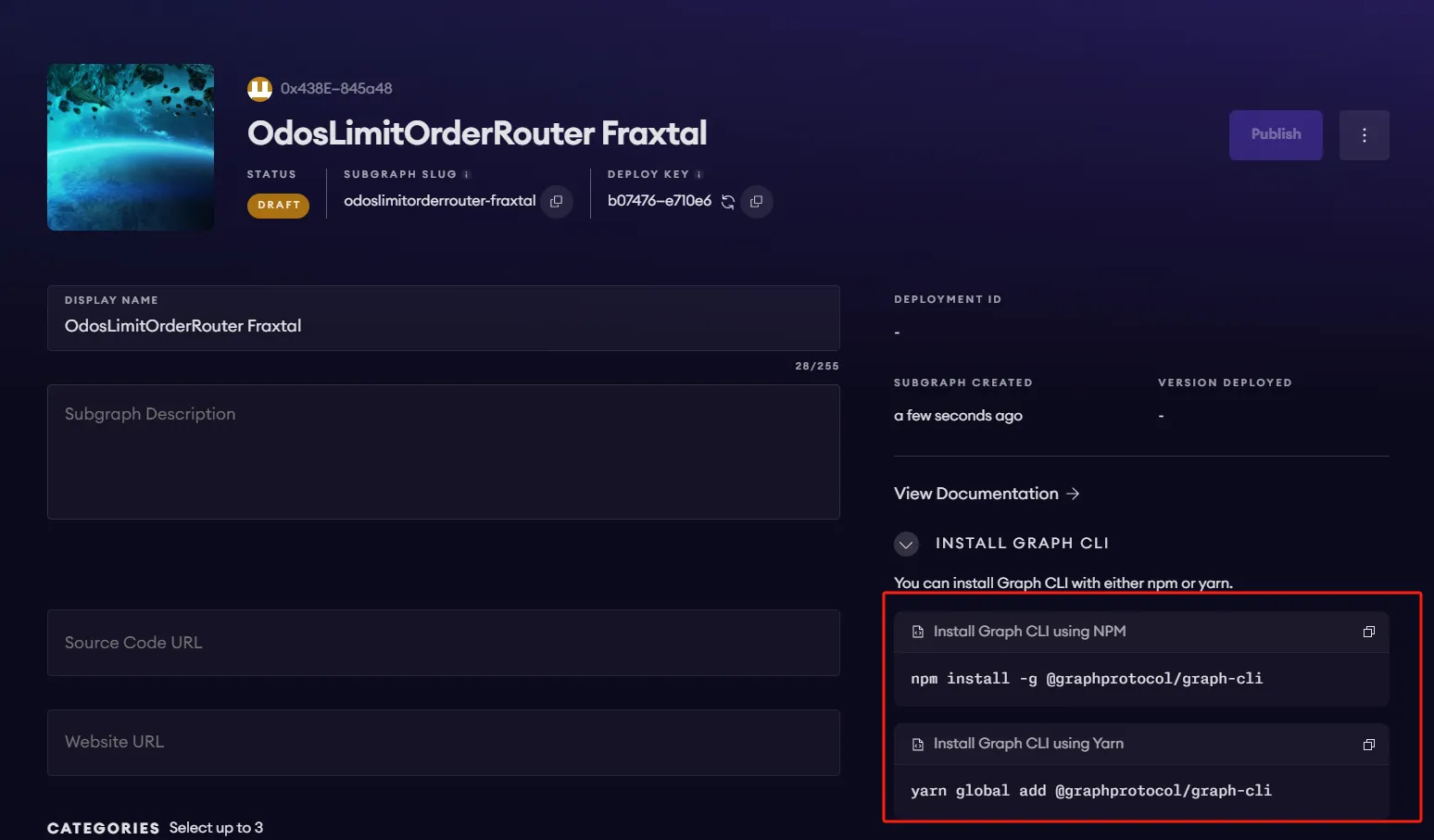
- Install the Graph CLI : On your local machine run the following:
$ npm install -g @graphprotocol/graph-cli- Initialize your Subgraph : You can copy this directly from your subgraph page to include your specific subgraph slug:
$ graph init --studio <SUBGRAPH_SLUG>You’ll be prompted to provide some info on your subgraph like this:
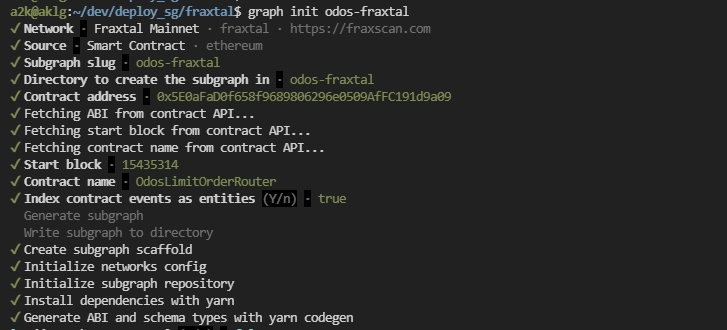
Simply have your contract verified on the block explorer and the CLI will automatically obtain the ABI and set up your subgraph. The default settings will generate an entity for each event.
2. Deploy & Publish
- Deploy to Subgraph Studio:
First run these commands:
$ graph codegen
$ graph buildThen run these to authenticate and deploy your subgraph. You can copy these commands directly from your subgraph’s page in Studio to include your specific deploy key and subgraph slug:
$ graph auth --studio <DEPLOY_KEY>
$ graph deploy --studio <SUBGRAPH_SLUG>You will be asked for a version label. You can enter something like v0.0.1, but you’re free to choose the format.
- Test your subgraph:
You can test your subgraph by making a sample query in the playground section. The Details tab will show you an API endpoint. You can use that endpoint to test from your dapp.
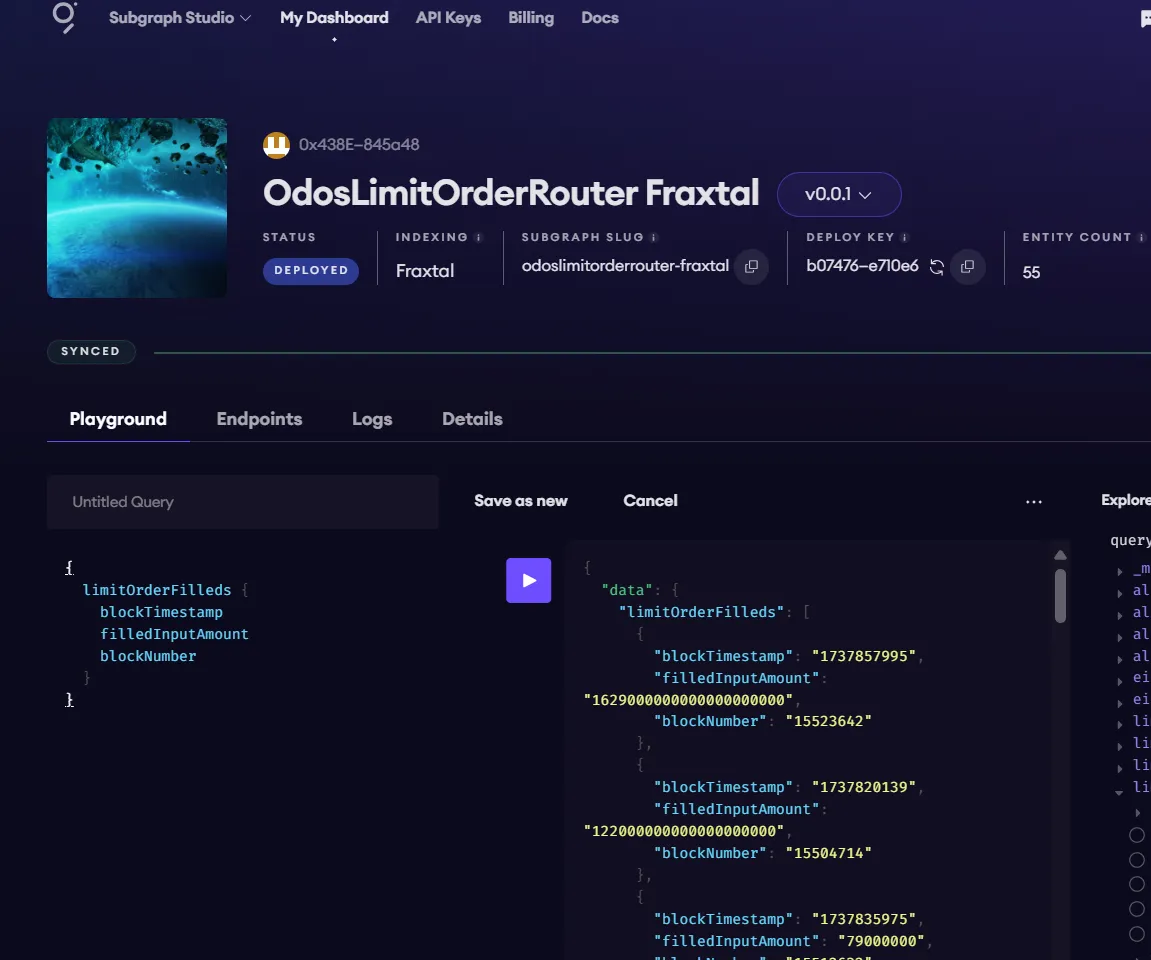
- Publish Your Subgraph to The Graph’s Decentralized Network:
Once your subgraph is ready to be put into production, you can publish it to the decentralized network. On your subgraph’s page in Subgraph Studio, click on the Publish button:

You'll need some ETH on Arbitrum One to create an on-chain transaction. The Graph's smart contracts are all on Arbitrum One, even if your subgraph is indexing data from another chain.
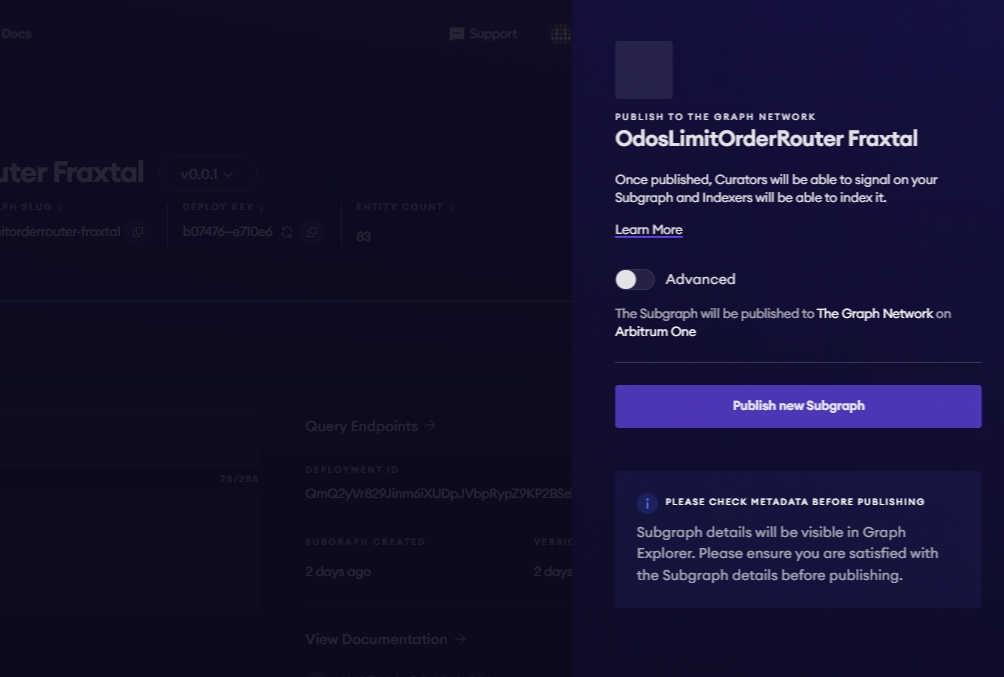
Note: When publishing, a "Partial Indexer Support" alert means subgraphs on this chain are indexed by The Graph's default indexer but not by independent indexers. Testnets always have this limitation. For mainnets, this warning will go away after a voting process enables indexer rewards for the chain, at which point you can attract multiple indexers to your subgraph.
3. Query your Subgraph
Congratulations! You can now query your subgraph on the decentralized network!
For any subgraph on the decentralized network, you can start querying it by passing a GraphQL query into the subgraph’s query URL which can be found at the top of its Explorer page.
Here’s an example from the CryptoPunks Ethereum subgraph (opens in a new tab) by Messari:

The query URL for this subgraph is:
https://gateway.network.thegraph.com/api/[api-key]/subgraphs/id/HdVdERFUe8h61vm2fDyycgxjsde5PbB832NHgJfZNqK
Now, you simply need to fill in your own API Key to start sending GraphQL queries to this endpoint.
- Getting your own API Key:

In Subgraph Studio, you’ll see the “API Keys” menu at the top of the page. Here you can create API Keys.